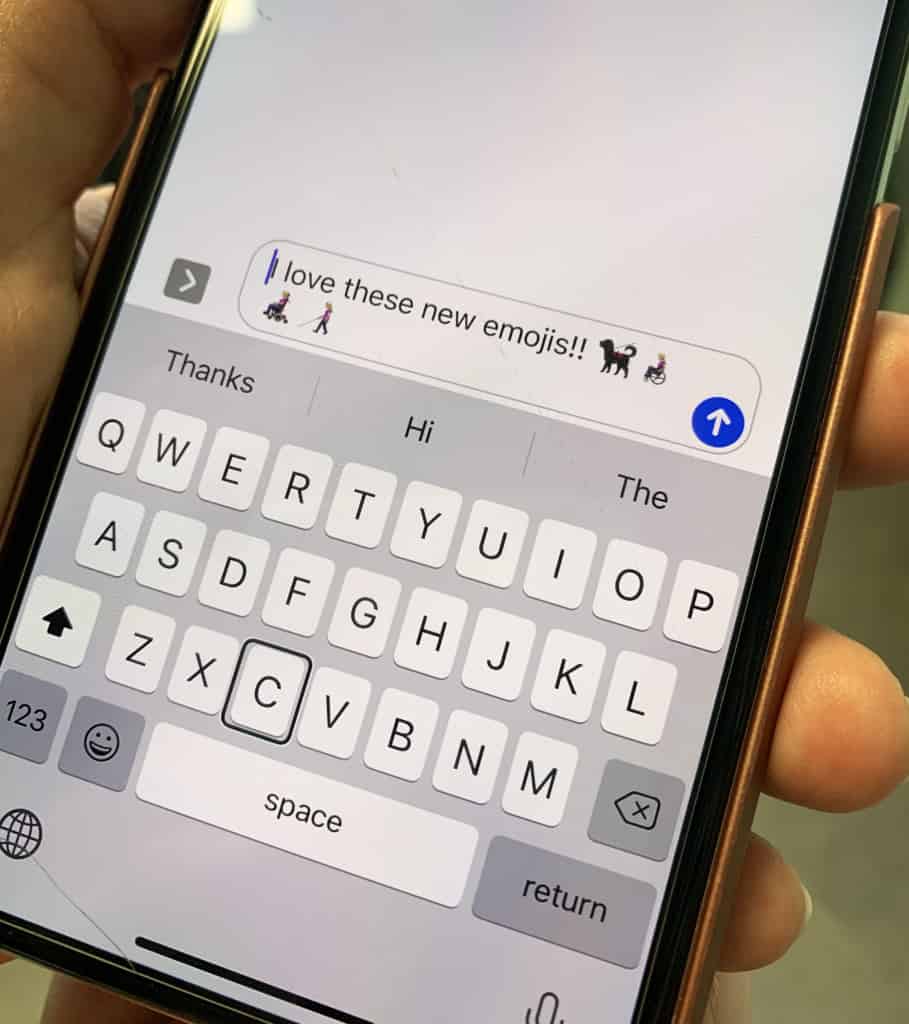Commentary: New Disability Emojis Are a Step in the Right Direction
Growing up as a person without sight, emojis were a foreign concept to me. All I knew about them was that they were written by using different symbols, letters and numbers. A colon next to a left parenthesis represented a frowning face, a semicolon with the right parenthesis meant a winking face, etc. At that time, screen-readers did not pronounce emojis accurately. My computer would say things like ‘semicolon right’, or ‘colon right paren’. I only knew what each meant based on what others told me.
Nearly 20 years later, the way people who are blind understand and access emojis has drastically changed. The screen-reader on my iPhone gives perfect verbal descriptions of all emojis, ranging from smiley faces to different animals and objects. Thanks to this I can read and send emojis to my family and friends. Although I cannot see these characters, the descriptions make sending and receiving them more enjoyable for me. Hint: if you have a loved one who is blind or visually impaired, try texting emojis to them! They will be able to appreciate them just as much as sighted individuals.
Not only have emojis become accessible to people with vision loss, but they are also more inclusive. A couple weeks ago, Apple released nearly 60 emoji characters. Thirteen of those depict disabilities. They include service dogs, characters with white canes, individuals with hearing impairments, motor and manual wheelchairs, and prosthetic limbs. These are things that most people with disabilities can relate to.
To say I was thrilled when I found out that Apple would be releasing these emojis is an understatement! For the first time ever, I would be able to use characters to identify my disability if I wanted. I have always felt that my vision loss is a part of who I am, so naturally having these symbols literally at my fingertips gives me an outlet to express this in written text. Come to find out, I was not the only person with a disability who was enthusiastic about Apple’s move. Several posts on social media and news articles were published by people with disabilities expressing their excitement about these emojis.
Over the last few years, numerous emoji characters representing different gender, races, facial expressions and other objects and symbols have been developed. I feel it is only fair for people with disabilities to finally have characters representing our experiences. This was a great step in the right direction. Various technology companies like Apple are working to create greater accessibility for people with disabilities, and this is something that benefits everyone.
More can be done to expand the variety of emojis representing people with disabilities. While the newly released characters consist of symbols representing people with physical, visual or hearing disabilities, future symbols should also include those for individuals with intellectual or cognitive disabilities. On the other hand, this can also be a challenge, as it might become difficult to accurately represent these types of conditions. Nevertheless, I am confident that by working together, Apple and people with disabilities will be able to further expand this collection in the near future.
The new addition of disability-themed emojis was received with great enthusiasm by many people with disabilities including myself. To me, this represents a step for grater inclusion and understanding of the experiences lived by those of us with visual or other disabilities. As a person who is blind, it sure is nice to see characters symbolizing some of the experiences I encounter in my day-to-day life.
What do you think about Apple’s new disability-related emojis? Please send us an email to sandysview@chicagolighthouse.org or comment below.

Sandy Murillo works at The Chicago Lighthouse, an organization serving the blind and visually impaired. She is the author of Sandy’s View, a Lighthouse blog about blindness and low vision. The blog covers topics of interest to those living with blindness and vision impairments. Being a journalist who is blind and blogger herself, Sandy shares her unique perspective about ways to live with vision loss.






